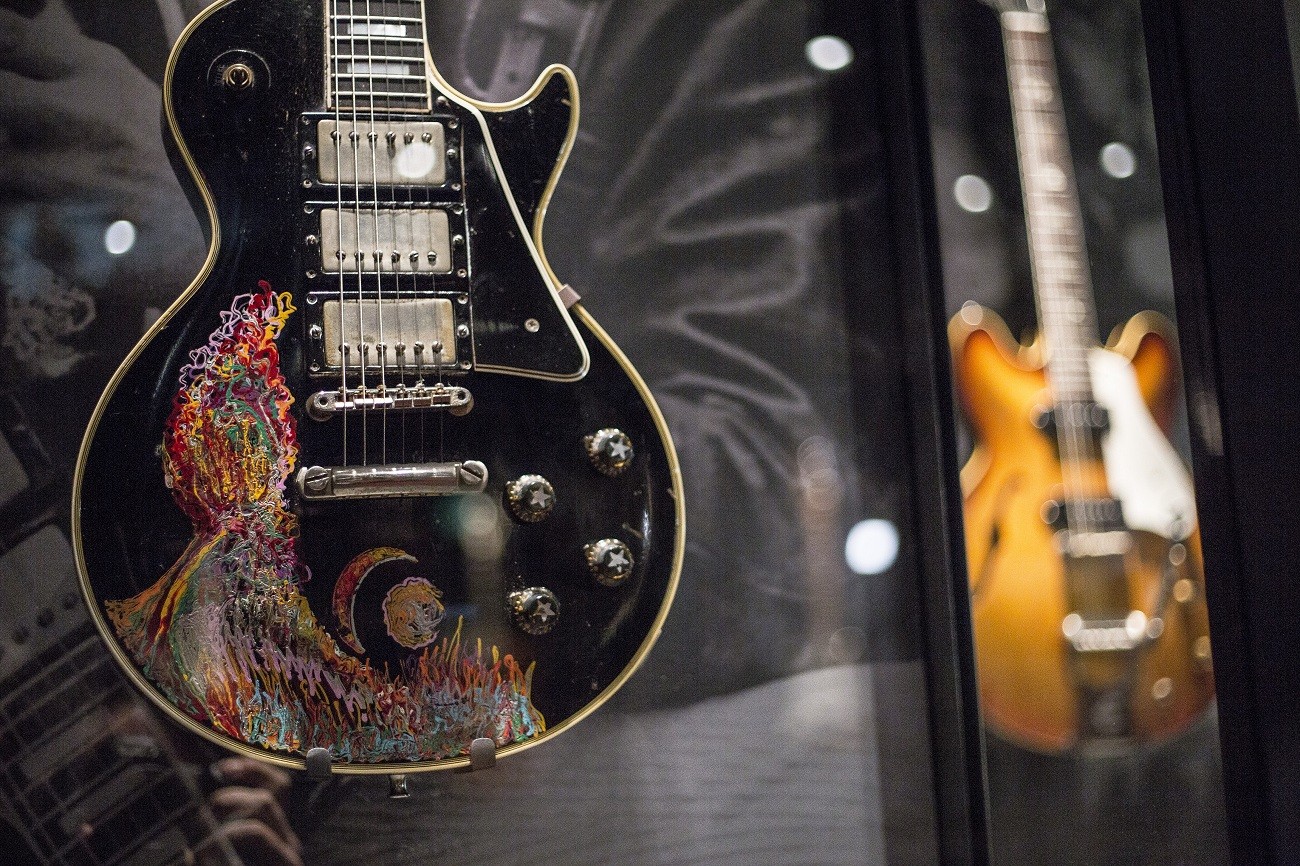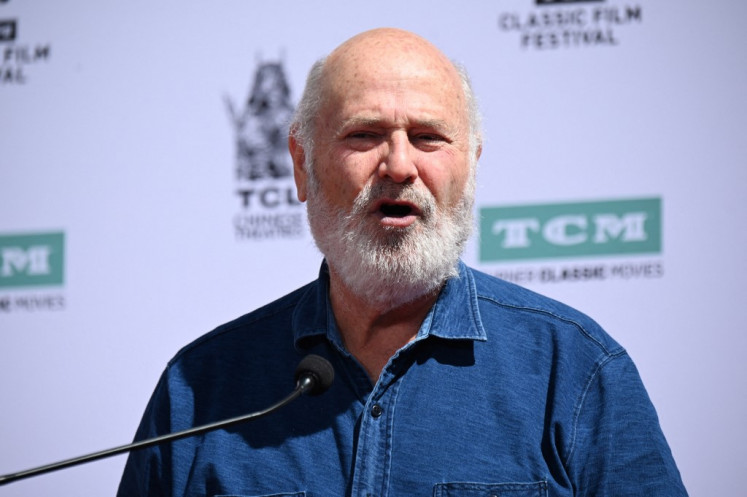Popular Reads
Top Results
Can't find what you're looking for?
View all search resultsPopular Reads
Top Results
Can't find what you're looking for?
View all search resultsGuitars, clothes and grunge at Rolling Stones exhibition
Change text size
Gift Premium Articles
to Anyone
F
rom their first apartment through their most recent tours, the Rolling Stones are giving fans a chance to take a deep look into their lives as the "Greatest Rock 'n' Roll Band in the World."
Here are some key things to see at "Exhibitionism," the British band's massive exhibition at the Saatchi Gallery that opens Tuesday:
___
EDITH GROVE
Shortly after the Stones got together as a band in 1962, founding member Brian Jones moved into an apartment in west London with Mick Jagger, Keith Richards and James Phelge. The apartment, at 102 Edith Grove, was notorious for being a mess, with clothes and dirty dishes strewn about the place.
The exhibition has recreated the scene with incredible detail, right down to the old empty beer bottles, a kitchen sink filled with pots and pans, and plenty of old Chuck Berry and Muddy Waters records ready to be heard by an aspiring band that was, at the time, making only a few dollars per gig.
"The milk bottles were just growing this . stuff," Rolling Stones drummer Charlie Watts says through a speaker as visitors walk through.
"It was very much like that, the kitchen particularly," Watts said as he arrived for Monday's opening.
Jagger and Richards shared the only bedroom with Phelge, a London club-goer who became their roommate and companion. Jones slept in the living room.
It was at Edith Grove that the band started writing their own music, like the Beatles were doing.
Although no photos exist of the original Edith Grove apartment, exhibition curator Ileen Gallagher said it was made from the memories of the current band.
"The real Edith Grove was like living in an alien culture," Phelge, now 73, told The Associated Press. "You can't replicate the spirit of the place."
___
OLYMPIC STUDIOS
Behind a wall of glass is a recreation of the studio where the Rolling Stones recorded their first single, "Come On," and many of their hits in the 1960s.
There are several instruments scattered around the floor, and a portion of "Sympathy for the Devil" — a 1968 Jean-Luc Godard film that shows the song's creation — plays on a screen in the background.
In honor of Ian Stewart, the original piano player kicked out of the band in its infancy because he didn't quite fit the part, there is his personal Ajello and Sons piano. Although Stewart wasn't officially a member, he stayed with the band as a driver, friend, helper and musician until his death in 1985.
Alongside the glass wall, there are several small screens with headphones where visitors can hear about recording methods.
"It's come out better than I thought. It's a fun half-hour walk-through," Jagger said of the exhibition. "If you don't like the Rolling Stones, probably not for you."
___
CLOTHES
There are lots of clothes, mostly from Jagger, in a room that looks like a museum.
There is the famous Omega shirt he wore on the 1969 U.S. tour. There is a replica of the flowing dress-like white shirt he wore when the Stones played a free concert at Hyde Park on July 5, 1969 — two days after the death of Jones.
From the 1970s, there are plenty of jumpsuits. And from the 1980s, you get the sporty look, when Jagger essentially wore a football uniform on tour.
"Mick kept his clothes, thank God," Gallagher said.
More recent garments include plenty of long coats and capes, some of them designed by Jagger's late partner L'Wren Scott.
The others contributed various articles, but Jagger's costumes are the ones that stand out.
"I hope they've been cleaned," Jagger joked.
___
GUITARS
The creators of the exhibition raided the homes of Richards and Wood looking for guitars to display, and they found a few of their most iconic pieces.
Among them is the 1957 Gibson Les Paul that was hand-painted by Richards and used during the filming of "Sympathy for the Devil." At the time, the Stones were involved in a drug case that threatened to ruin the band.
"Yeah, I painted it," Richards says in the notes accompanying the guitar. "I was bored, waiting to go to jail."
 An image of Mick Jagger forms the backdrop of a recreated music studio as part of Exhibitionism.
An image of Mick Jagger forms the backdrop of a recreated music studio as part of Exhibitionism.
___
MEMORABILIA
Another section of the exhibition is dedicated to old posters and records, the walls filled with colorful reminders of how many times the Rolling Stones have circled the globe over the decades.
Matt Lee, a 40-year-old marketing professional from London who is one of the world's foremost Stones collectors, loaned more than 50 items to the exhibit, including many of the posters on display.
"As a general rule of thumb the earlier the poster the rarer it is, not just because it is older and less have survived, but because less were made in the first place," Lee told the AP. "The '60s posters are particularly rare but many of the '70s ones are super tough to find, too, particularly in great condition."
Another of the objects he handed over for display is the first contract signed by the band in May 1963.
___
3-D MOVIE
At the end of the exhibit, visitors walk through a backstage area and into a small theater where they can watch a 3-D movie of the Stones performing "(I Can't Get No) Satisfaction."
Filmed in 2013 when the Stones returned to Hyde Park for a pair of gigantic shows, the video brings the viewers right into the concert.
Richards' guitar neck protrudes from the screen. Jagger appears seemingly out of nowhere and struts right in front of your eyes.
"Frame by frame we turned it into 3-D," said Patrick Woodroffe, who has worked with the Stones for years. "It cost a fortune."











